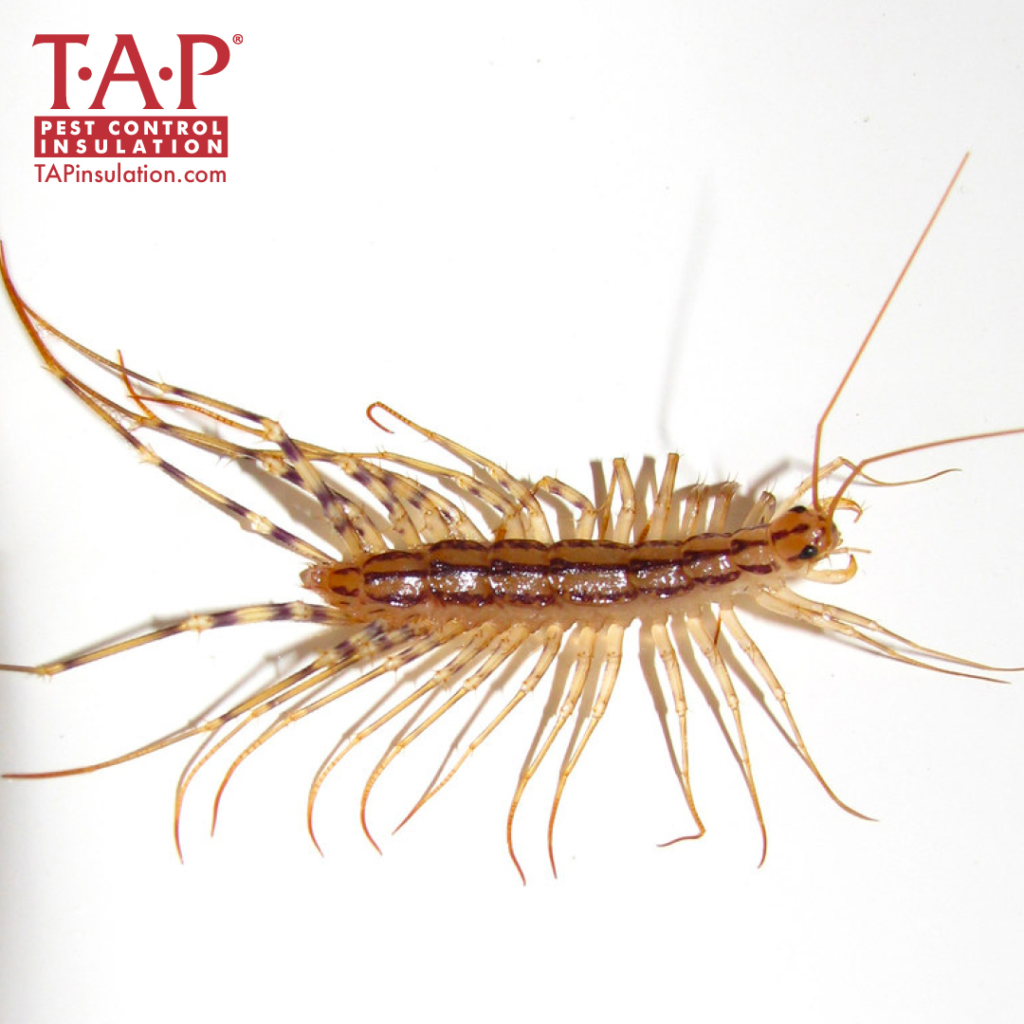
Imagine for a moment that it is three in the morning. You are awoken by an urgency to visit the restroom. As you walk across the cool tile, you see something move out of the corner of your eye. You immediately think to yourself, “why didn’t I turn on the light?” Cautiously you begin to investigate and discover you are not alone. There is a massive beast with an elongated body and numerous legs. Before you make a bee line for the phone and dial 911, let’s dig a little deeper into what you will eventually discover is a simple centipede.
But They Are Scary, Right?
Yes, the creepy ‘ick’ factor one receives when seeing a house centipede is based on its veraciousness and speed. Many people find the common house centipede scary due to their secretive nature and scary appearance. Add to that their erratic or darting motion and your natural fear of these arthropods will immediately unleash horror in your mind. However, centipedes are not known to attack or carry diseases. They do have poison glands and the ability to inject venom, but their bites are infrequent and often only cause temporary, localized pain and numbness.
Tell Me More
Centipedes, while normally found under logs, rocks, and other protected, damp locations on the exterior of your home, do tend to frequent the indoors in search of moisture, safety, and food. They are also seeking heated structures in which to reproduce. House centipedes were first introduced into Mexico and the southern parts of the United States. It is believed that they originated somewhere in the Mediterranean region.
What is Cool About Them?
Scientifically speaking, house centipedes are cataloged as Scutigera Coleoptrata in the Chilopoda Class. Despite popular belief that centipedes have over 100 legs, most house centipedes have between 8 to 30 pairs legs depending on their age. New legs come each time the centipede sheds its exoskeleton.
Also, the stronger legs are in the back allowing the front legs to ‘guide’ the centipede on its journey. Each leg also has multiple sensory hairs which aid the antennae in detecting food, water, and predators. The tip of each centipede leg is also a tool or lasso to grip prey and prevent them from escaping. How is that for cool and spooky?
Do They Carry Diseases?
House centipedes are actually continuously grooming themselves like a cat. They clean from their front legs and move to the back. However, it is not recommended to let them hang out in your kitchen or pantry.
Ready to rid your home of centipedes and other self-grooming insects? Contact us to find a provider of TAP® Pest Control Insulation near you!

